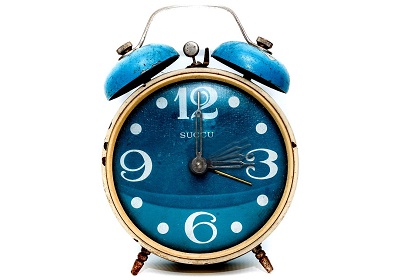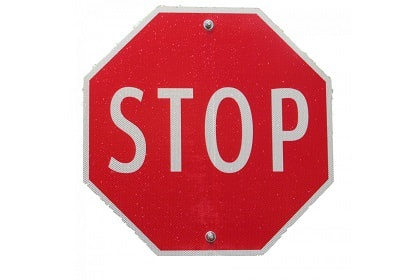When we can’t get stuff done, it might very well be procrastination. But it might also be that we feel helpless.
Sometimes, when we’re trying to make progress on something, it can feel like we are surrounded by an invisible wall, or weighed down by a gigantic boulder. We want to take action, but it feels like this intangible force is keeping us down, holding us back and tying our hands behind us.
Whatever it is we are trying to do, we just can’t do it.
Let’s say we have a project we want to complete. We can’t seem to make progress on it. We keep picking it up and putting it down again in an endless cycle of gathering momentum only to lose steam, every time we hit this invisible barrier. And no matter how hard we try, we just can’t seem to break through.
We wonder if we are just chronic procrastinators. Maybe it’s because we feel inadequate. We’ve got imposter syndrome, we tell ourselves. Or, it’s probably just resistance.
There is a state of being that ties in all of the above (and more).
It marries together inadequacy, procrastination and resistance with the inner critic, fear of failure, fear of success, inability to focus, depression, low self esteem and loneliness.
It’s called helplessness.
And a psychological study in the 1960s gives us an idea how this feeling takes root at an early age.
Learned Helplessness
Psychologist Martin Seligman discovered the theory of Learned Helplessness in the late 1960s, following a series of controversial experiments on dogs.
Seligman and his colleagues saw that in general, dogs failed to take action to avoid an electric shock if they had been in a previous experiment where no escape was possible – even if all they had to do, this time round, was jump over a small barrier.
In the 1970s they extended their research to humans and realised again, that the act of being exposed to repeated stressful situations we are powerless to stop, leads to an inability to act at a later point when we do have the power to change things.
We lack motivation, we have low self-esteem, we lack agency, we have difficulty coping with failure, we don’t recognise our successes and we give up prematurely.
How We Learn To Be Helpless (& Powerless)
So what kind of situations can we find ourselves in early on, that could lead to feeling this way later in life?
Here are just a few:
- If we had a highly critical parent (or teacher), we might learn that nothing we did was ever good enough. That might lead us to feel (quite logically) that there was no point trying anything,
- If we had an abusive family member (or got bullied at school), we might learn that it is safer to keep quiet, fly below the radar and never do anything that could provoke a reaction. That might lead to (amongst other things) a fear of being seen (in case we inadvertently step out of line again).
- If we were frequently mocked, invalidated and belittled, we might learn to shut down any [valid] opinion or talent we have. That might lead us to feel, in later life, that our ideas are stupid, that we would only embarrass ourselves by sharing them, so why risk the humiliation?
- If we were ignored, sidelined and neglected, we might learn that we don’t matter, that no one is interested in what we have to say or offer. We might still feel as adults that there is no point trying to contribute anything because no one would care, anyway.
- If we grew up in a strict household, we might learn (very quickly) that we don’t have the freedom to be who want, do what we want or say what we want. As an adult, good behaviour and obedience might be so ingrained in us, that the idea of doing anything outside of the norm might feel inconceivable.
What Triggers Us
If we keep quiet, fly below the radar and stay in our lane, it’s likely we might never suffer that much from feelings of powerlessness or helplessness.
It’s when we try and step outside our comfort zones that these feelings begin to emerge, disguised as a “block”.
Unbeknownst to us at the time, by sticking our heads above the parapets, we are challenging the old, unresolved conditioning we have long forgotten about.
And what we are trying to do in adulthood is running counter to the needs and beliefs of the side of ourselves that is still stuck in childhood (or an earlier time in our lives).
So, our adult (conscious) selves will want to have a voice, share an idea or create something new. But our earlier/childhood (unconscious) selves will still be primed to stay silent, keep our thoughts to ourself and avoid rejection or humiliation at all costs.
We think we feel powerless because we can’t move forward. And that is technically true, but that powerlessness is actually rooted in a far earlier time.
If we didn’t already feel powerless, we would be able to act. We could navigate our way around things.
So what do we do?
How To Feel More Empowered
There are many ways we can begin to feel more empowered again.
Primarily, therapy will get us over the line.
Whether we see a psychotherapist or an energy healer, there are a wide number of modalities on offer that can help ease the feelings of helplessness and powerlessness.
And we also can help ourselves, as well, if we want to.
Here are just a few examples:
- Journalling: writing about how you feel will bring your thoughts to light and allow you to see where you are conflicted. For example: “I am frustrated my project is not getting the attention it deserves” vs “I am scared to promote my work to others.”
- Tapping (EFT): try this energy psychology technique by tapping on pressure points to ease the frustration you feel. Speaking out loud can also help (e.g.”this fear I have of being laughed at” etc). Brad Yates has many tapping videos on YouTube on a wide variety of topics, which are incredibly useful. You can find them here.
- Visualise the block: lie down or sit in a comfortable position and focus on how the block feels in your body. Focus on its size and shape. Recognise that it has an outer rim and that there are parts of you that it does not touch. Begin to imagine it floating away, like a balloon.
- The CORE technique: focus your attention on the edges of the block. Focus on the parts that feel the most intense and begin to push into them. They will begin to dissipate. You can see an example of this technique in action here.
- Chair work: sit in a chair and imagine you are talking to the self that is “holding you back”. Tell them how you feel, for example, that you feel powerless and can’t make progress. Then move to a different chair and answer as the self you were just talking to. Let them explain their fears and concerns, for example that they are scared of the consequences of acting. The goal is to find a way to meet the needs of both parts of you. (you can find a step-by-step guide to do this here)
Our walls, like real-life walls, are made of many “bricks”.
Removing one brick will not demolish the wall, but gaps of air will appear.
The feeling of powerlessness will begin to subside and our feelings of motivation will gradually return.
And the thing we just couldn’t seem to do before will now be that bit more doable.






